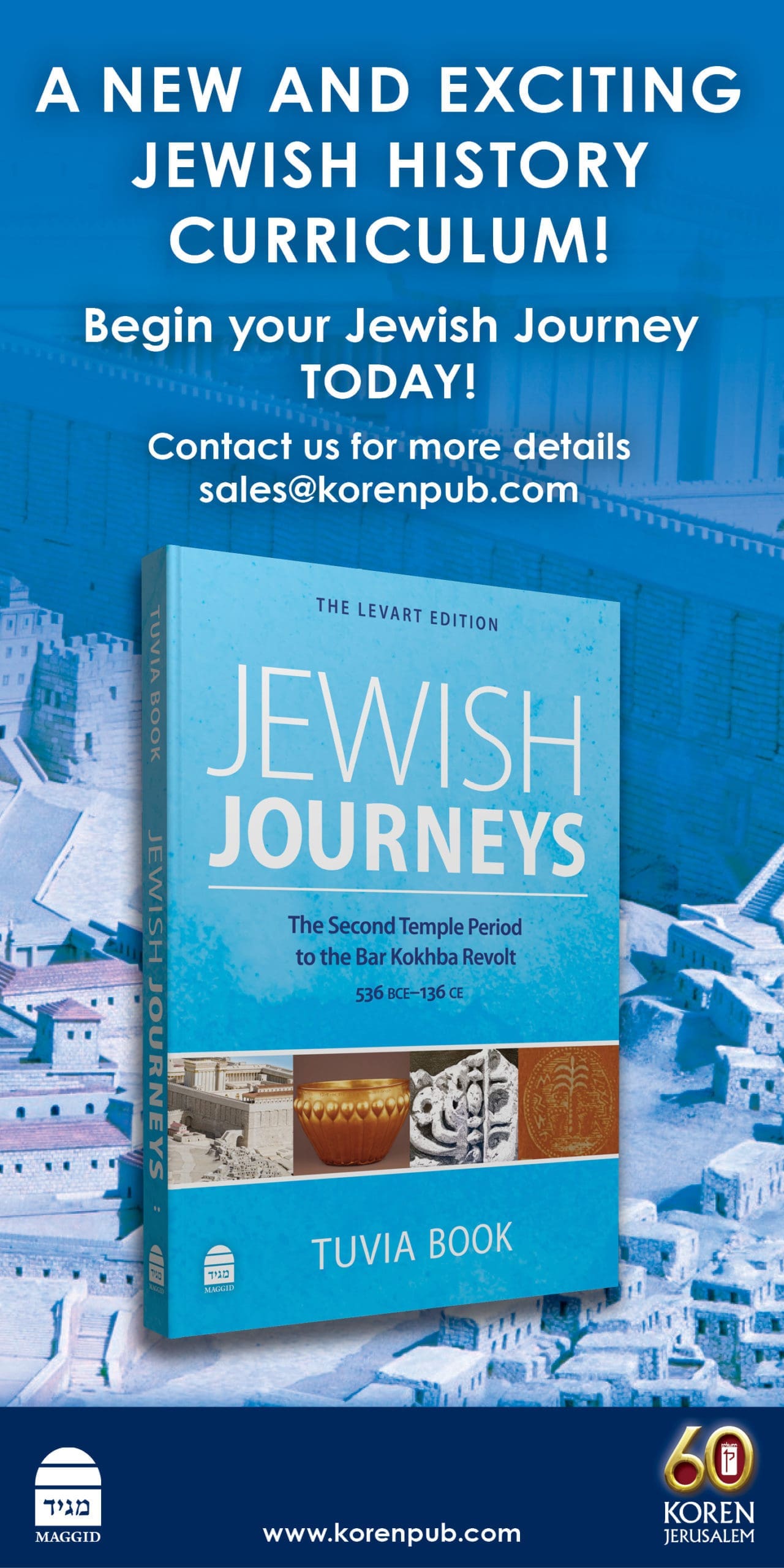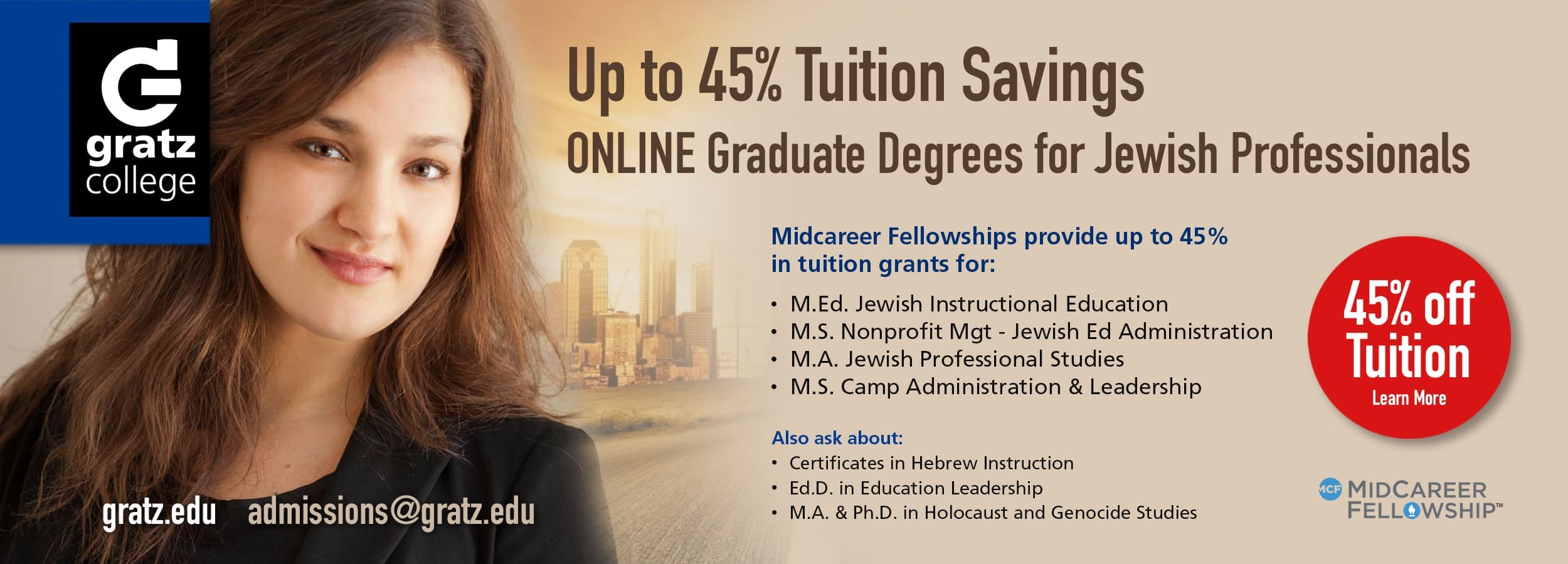Shortly after I began teaching World-Jewish History at Ramaz in the early 1990s I had a clarifying moment that seemed to justify that school’s integrated approach to Jewish History education. My ninth-grade students were studying the Ancient World and the day’s lesson involved a primary source comparative analysis of the text of the Cyrus Cylinder and the first three chapters of the Book of Ezra. The former text extolls the Persian ruler Cyrus the Great for repatriating conquered people and restoring their temples, while the latter includes Cyrus’s edict allowing the Judeans to return from exile in Babylonia and the rebuilding of the Temple. I divided the students into small groups and provided them with an English translation of the Cyrus Cylinder text, and a side-by-side Hebrew- English version of the Biblical text. They were settling down to work when suddenly I heard a voice from the back of the room: “Hey, wait. Koresh is the same person as King Cyrus? Wow! That’s crazy.” I just smiled and said, “When you compare the texts it will make even more sense to you.”
In time, I only became more confirmed in my conviction that students were apt to compartmentalize their learning. A Jewish History teacher could not assume that students would intuitively draw the necessary through-lines between their learning in general History and Jewish History unless the learning environment modeled and encouraged them to make those connections. Thus, the advantage of an integrated curriculum appeared to be obvious: It facilitated students’ abilities to place the Jewish experience into the wider political, economic, cultural, and social context. It provided an opportunity to present Jews as integral to, rather than apart from, central historical narratives about society and culture.
Sequestering the Jewish experience for separate treatment is reminiscent of how women and People of Color are often relegated to easily overlooked sidebars and captioned photos in History textbooks. Historian Nancy Bazelon Goldstone points out that when women are “shunted off to the side,” whether in History book sidebars or well-meaning observances like Women’s History Month, they “remain a subset of history rather than integral components of recognized major events.” One need not go as far as Goldstone, who recommends that Women’s History Month be abolished and that universities disband their women’s studies departments, to recognize that her fundamental point is valid. So too, Jewish History is World and American History.
When I embarked on an academic career and immersed myself in the learning-sciences literature, I found that an integrated History curriculum also made sense from the perspective of learning theory. Among the most fundamental cognitive processes is the ability to apply knowledge and skills to a new situation. Frequently that “transfer of learning,” as it is referred to in the literature, is virtually reflexive. A child who learns to climb a tree instinctively applies that knowledge when presented with a climbing wall, just as that same child can easily make the leap from crayons to colored chalk and magic markers. These are examples of what the literature refers to as “near transfer,” that is, applying knowledge in situations that are roughly similar to that where one acquired the original learning. It is considerably more difficult, however, to apply acquired knowledge to very different contexts. For example, students who learn History frequently find it difficult to apply historical knowledge and concepts to current events, nor do they easily apply concepts learned in geometry to their shop or robotics courses. These are examples of what is called “far transfer.” Educational researcher David Perkins provides an accessible introduction to the transfer of learning in his 2009 book, Making Learning Whole: How Seven Principles of Education Can Transform Education. He cautions teachers not to rely on what he calls “the Bo Peep theory of transfer” after the popular nursery rhyme. Transfer of learning won’t just take care of itself like Bo Peep’s sheep, who returned home “wagging their tails behind them.”
In day schools, learning transfer between general and Jewish studies is further impeded by the tendency to compartmentalize the Jewish and the secular. Day school students have internalized the notion that secular learning and Jewish learning operate in separate domains and according to different rules. For example, researcher Tali Hyman Zelkowicz’s observations in a Jewish community high school revealed major dissonances between general and Jewish studies learning. The contrasts are bound to be more pronounced in many Orthodox schools where the boundaries between religious and secular studies are more dramatically demarcated.
Applying what we know about the transfer of learning to my original anecdote, it is not surprising that my student initially compartmentalized what she knew about the Babylonian captivity and the return of the exiles, presumably from her elementary school Jewish studies courses, and what she was learning about the Persians. It was only when I prompted transfer by placing the texts in conversation with one another that she was able to break down her mental silos. As Perkins explains, far transfer is more likely to be successful when it is shepherded through cuing and practice. An integrated History curriculum provides ample opportunity for teachers to cultivate transfer using these strategies.
The limits of transfer between general and Jewish History were demonstrated in an exploratory study of eleventh graders at two Jewish high schools (one Orthodox and one pluralistic) who were asked to place ten seminal events in modern Jewish History on a sequential modern European History timeline. Most struggled with the exercise, even when the Jewish History events had a direct causal connection to those listed on the timeline (e.g., the French Revolution and Jewish emancipation in Western Europe; World War I and the Balfour Declaration, etc.). All of the students had studied these events in separate modern and Jewish History courses, yet they struggled to make the connections, to place Jewish people and events in a wider context.
One of the primary reasons why students study History, after all, is to understand change over time and how the society we live in came to be. When schools silo Jewish History they are subverting that goal and likely perpetuating misperceptions and misunderstandings, particularly in relation to claims of Jewish exceptionalism.
As we examine the challenge of transfer in Jewish History education, one thing is certain: Salvation will not be found in the pages of the typical World History textbook. Jews are frequently rendered even more invisible in these books than women. Ben Jacobs and others have shown that widely-adopted world and U.S. History textbooks rarely mention the Jews, and that even treatments of Jews in relation to immigration, antisemitism, and the Holocaust are typically cursory, while examinations of Zionism and the Arab-Israeli conflict are often politically fraught. If anything, thoroughly integrated World- or U.S.-Jewish History courses can serve as a needed corrective to the sins of omission and commission in standard textbooks.
Any meditation on the merits and drawbacks of teaching an integrated History curriculum would be incomplete without raising the issue of staffing. Among the most common refrains I hear from school officials is that an integrated World-Jewish History sequence is impractical because it is very difficult to find teachers who are qualified to teach both sides of the curriculum. As a former History department chair, I have a lot of sympathy for this argument. But as researcher Sivan Zakai points out, many teachers who are currently teaching stand-alone Jewish History have little or no pedagogical content knowledge or training in History teaching methods. They may be exemplary Jewish role models but they have little understanding of History as a discipline. In their well-meaning hands, Jewish History often becomes an endless parade of facts and dates or, worse, stories of heroism and woe shaped by what historian Salo Baron decried as a “lachrymose conception of Jewish History.” A talented History teacher—whether their expertise is Jewish History, U.S. History, East Asia, Latin America, etc.—has acquired the skills and habits of thinking to expand their pedagogical content knowledge through reading or taking online or summer courses, hopefully with the support of their school’s professional development funds and possibly a small stipend. While it is beyond the scope of this article, my fervent hope is that academics and funders can cooperate on an initiative to train mid-career general History teachers to teach Jewish History.
It is useful to recall cognitive psychologist Sam Wineburg’s admonition that teaching historical thinking is no mean feat. Essentially you are training students to navigate between the familiar and the strange, a “usable past” and “the past as a foreign country.” You are also teaching them to think critically, to read critically yet empathetically, and to balance multiple perspectives. Absent these skills, History devolves into a monotonous and repetitive exercise in teacher storytelling and student memorization and regurgitation, devoid of any larger purpose. An integrated History curriculum taught by a teacher with a background in historical methods as well as pedagogical content knowledge is most likely to cultivate historical thinking skills.
When our schools fail to cultivate historical understanding, they not only deny our students insights into how our society came to be, they also blunt History education’s power to motivate civic participation. I am not thinking merely about group identity and loyalty, although those are important. When we deny our students an appreciation for historical contingency and societal change over time, we are encouraging complacency and snuffing out any hope for a better future. To quote scholars Linda Levstik and Keith Barton, “history is a work in progress” that “helps us to picture possible futures.” In this broken world, we want our students to see themselves as change-agents rather than victims.
As Jewish educators, we are naturally concerned about Jewish identity formation and recognize History’s power to foster a sense of belonging and pride. In the words of historian Peter Stearns: “Merely defining the group in the present pales against the possibility of forming an identity based on a rich past.” I can imagine that some would argue that an integrated curriculum would be antithetical to this goal on the grounds that it relativizes the Jewish experience and thereby undermines claims of Jewish chosenness. (Show me any national group that does not conceive of itself as exceptional and superior!) An easy rejoinder is that this tension is inescapable as long as Jewish History is taught qua History, regardless of whether it is integrated or siloed.
But a stronger argument in my view cuts to the heart of the type of Jewish citizen that our schools are trying to produce. If our goal is compartmentalization; if like Judah Leib Gordon, we are counseling our students to be Americans on the street and Jews at home; or worse, if the (not so) hidden curriculum of our Jewish day school is Jewish chauvinism and contempt for those outside the fold, then a convincing argument can be made for a separate Jewish History course. On the other hand, if we want our students to wear their Jewish identities proudly and to live as fully integrated and engaged American Jews in an open society; and if we believe that Judaism and modernity must inevitably coexist, at times in creative synthesis and at times in productive tension, then an integrated curriculum becomes a sine qua non.

Jonathan Krasner is the Jack, Joseph, and Morton Mandel Associate Professor of Jewish Education Research at Brandeis University and the recipient of two National Jewish Book Awards for The Benderly Boys and American Jewish Education (2011) and Hebrew Infusion: Language and Community at American Jewish Summer Camps (2020). He is currently writing a history of the Jewish day school movement in the United States.
Reach 10,000 Jewish educational professionals. Advertise in the upcoming issue of Jewish Educational Leadership.







Yes! Finally someone is saying this!